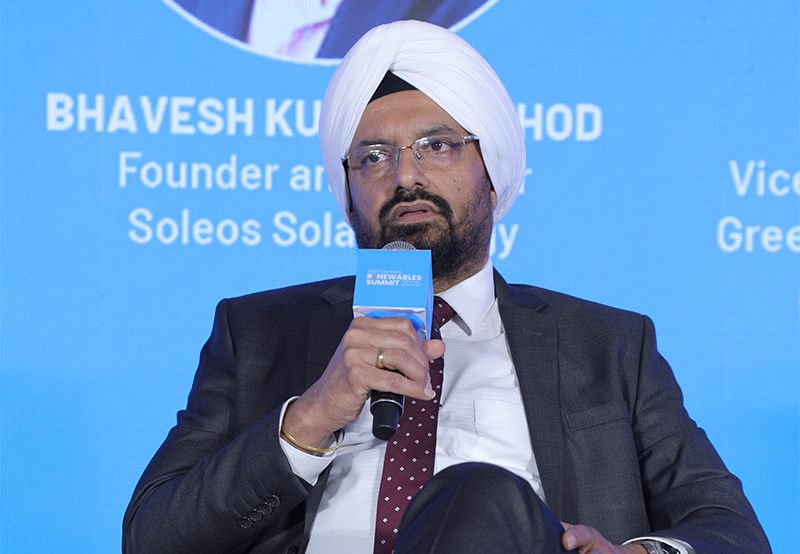Wind Developers Struggle with Long Waits for PPAs and Payment Releases: Interview
Shortage of evacuation infrastructure a big challenge for wind projects
August 19, 2025
Follow Mercom India on WhatsApp for exclusive updates on clean energy news and insights
In an interview on the sidelines of the Mercom India Renewables Summit 2025, Inder Bhambra, Chief Business Officer at Envision Energy, discussed the increasing demand for hybrid renewable energy projects, the impact of the expiry of interstate transmission system waivers, and the challenges faced by offshore projects in India.
Could you please provide an overview of the services your company offers?
We are a company primarily focused on the wind turbine market. We also offer battery energy storage systems (BESS) and have received a couple of large orders in BESS. We are hoping to provide solutions even beyond wind and BESS soon.
With the interstate transmission charges waiver ending, do you see the landed cost of projects going up?
It will, unfortunately, result in tariffs increasing, especially in states that import power. We are likely to see a tariff hike in the upcoming auctions. However, the end user will be impacted unless the developers can pass the impact on to the distribution companies.
There has been a shift from vanilla projects to firm and dispatchable energy and round-the-clock (RTC) projects. What is the primary reason for this shift?
The reason is simple. It makes the power availability more predictable, and also stabilizes the grid. Going forward, all the new power generation is going to come from wind, solar, and it’s going to create instability in the grid. RTC power puts less pressure on the distribution companies, with backup sources available when the wind and solar power projects fail to perform.
I don’t see vanilla projects taking up a bigger share than they’ve in the past. Their share is only going to deplete, especially with the cost of storage falling over the past few months.
There is no reason why the RTC or hybrid solutions will not form a sizable chunk of the share in the future.
Despite the government floating multiple tenders and providing viability gap funding (VGF), why have offshore wind projects not picked up?
The primary reason for offshore projects not picking up in India is that we have other alternatives. Offshore wind has done well in Europe and in some other developed nations where there is a lack of land for onshore projects. In such countries, you have good infrastructure in terms of shipping and the infrastructure required to develop these projects.
In India, we need to improve the infrastructure required for offshore wind projects. Offshore wind also doesn’t justify the additional costs that are incurred for setting up such projects. We all know they are at least three times more expensive. Offshore wind requires subsidies. Despite all the subsidies, tariffs would still be higher for DISCOMs than the tariffs at which they’ve been buying. This has been discouraging people from looking at offshore wind.
How do infrastructural constraints and policy instability impact project developers?
Largely, developers are impacted by the shortage of evacuation infrastructure for wind projects.
There’s a difference between solar and wind. Solar has proven to be well-established over the past few years, and India added 24 GW last year. That’s primarily because solar energy offers more flexibility. You can choose a site that is closer to the existing evacuation location, which is largely the DISCOM evacuation points.
Whereas in wind, you require evacuation infrastructure that needs to be built. Many of the projects are being developed at over 400 kV level and building that infrastructure is taking time. Acquiring land is becoming increasingly expensive. There are challenges in securing right-of-way approvals. There has also been a major policy shift regarding the localization of component sourcing. While original equipment manufacturers like us have appreciated the move, we need sufficient time to implement it.
What are the primary challenges faced by wind project developers?
There is some uncertainty, even in terms of power offtake. After the auctions, it takes months for power purchase agreements to be signed. We have also seen that DISCOMs take six to twelve months to release payments.
What are the expansion plans of Envision Energy?
We would want to get into green hydrogen and the smart industrial parks also very soon in India.
(Note: Sections of the interview have been paraphrased for better reading. Check out the video for a full chat)
